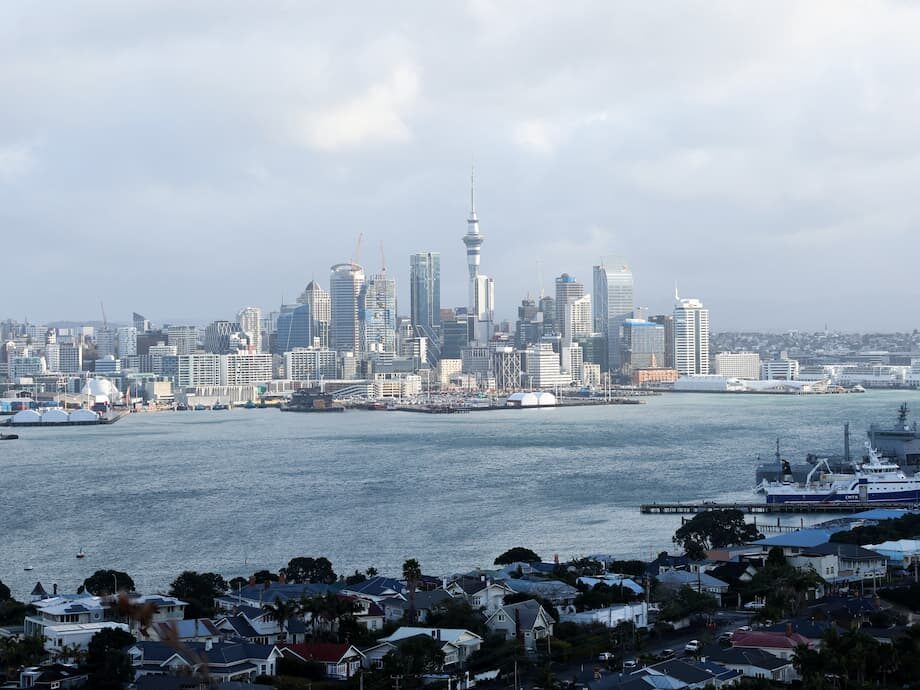What has changed and why it matters
New Zealand is restructuring how skilled migrants can gain residence, introducing two new residence pathways scheduled to open from mid 2026. The policy is aimed at helping employers retain experienced workers already in the country and at attracting trades and technical talent for roles that are proving hard to fill. The move comes as businesses report persistent shortages while the economy slows and more citizens depart than return.
- What has changed and why it matters
- How the new residence pathways will work
- A country losing people and momentum
- Coalition politics and business reaction
- The broader 2025 immigration reset
- Digital nomads and visitor visas in 2025
- Golden visas and investor interest
- What it means for students and recent graduates
- Timelines, thresholds and what applicants should prepare
- Key Points
Departures have accelerated. Between July 2024 and July 2025, 73,400 New Zealand citizens left the country, while 25,800 returned, according to Stats NZ. Employers say they are losing productive staff to emigration and that current residence settings have been too rigid for practical workers with long records of performance in New Zealand workplaces.
Economic growth minister Nicola Willis framed the shift as a response to what firms are experiencing on the ground and a way to lock in talent that is already contributing to productivity.
Introducing the minister and her position, she said the changes are motivated by the need to fill persistent vacancies:
Nicola Willis, minister for economic growth: “Skilled and experienced migrants could help plug gaps in the workforce.”
Immigration minister Erica Stanford has said some occupations will face additional eligibility settings to keep flows within manageable levels and to target higher skill areas. The detailed lists for trades and technician roles will be released closer to launch.
How the new residence pathways will work
The two routes sit within the Skilled Migrant Category Resident Visa and focus on people in skilled roles or specified trades. Both aim to create a clear, predictable route to residence for workers who can demonstrate either long relevant work experience or formal trade qualifications plus practical experience.
Skilled work experience pathway
This route targets people in skilled roles that align with the Australian and New Zealand Standard Classification of Occupations (ANZSCO) skill levels 1 to 3. Applicants must show at least five years of directly relevant work experience, with at least two of those years in New Zealand. During the New Zealand period, applicants must earn at least 1.1 times the median wage. With the current median wage at 33.56 dollars an hour, the present earnings benchmark is about 36.90 dollars an hour. The skills, experience and earnings template is designed to reward proven performers already integrated into local teams.
Trades and technician pathway
This route focuses on specified trades and technician roles. Candidates will need a relevant qualification at Level 4 or higher and at least four years of post qualification skilled experience, including at least 18 months in New Zealand. Pay must be at or above the median wage during that New Zealand tenure. The government says the list of eligible trades and technician roles will be published before the pathway opens, and it has signaled that a new National Occupation List will replace ANZSCO for future classification, which could change how roles are grouped and assessed.
Officials are also preparing adjustments that make it easier for international graduates with New Zealand university qualifications to remain, including reducing how long they need to work in the country before applying for residence. This is intended to align education and immigration settings and to strengthen graduate retention.
A country losing people and momentum
The policy shift lands as many New Zealanders seek better pay and larger markets in Australia. Data compiled by Stats NZ shows a sizable outflow over the past year. Employers and regional leaders warn of staffing gaps across health, construction, engineering, manufacturing and information technology. Weaker output over recent quarters has highlighted capacity constraints, with hard to fill roles adding friction to investment and delivery timetables.
Foreign affairs minister and New Zealand First leader Winston Peters has voiced concern that some migrants who gain residence add skills to the economy only briefly before moving on to Australia. Stats NZ reports that in 2024, 35 percent of New Zealand citizens who migrated to Australia were born overseas, reflecting the scale of onward movement.
Introducing the minister and his view, he warned that policies need to reflect domestic training needs as well as employer demand:
Winston Peters, minister of foreign affairs and New Zealand First leader: “New Zealand is being used as a stepping stone into Australia.”
His party invoked the agree to disagree provision over the policy, pressing the case for more targeted settings and for a stronger pipeline of locally trained workers. Government leaders responded that the new residence routes are designed for migrants already living and working in New Zealand and that eligibility limits will apply in sensitive occupations.
Coalition politics and business reaction
Business groups have argued for years that residence pathways were too narrow for skilled vocational workers. The Employers and Manufacturers Association says workers with industry credentials and long experience have contributed strongly across sectors, yet found it difficult to secure residence. BusinessNZ has said that clearer residence routes give firms confidence to invest, to expand capacity and to take on more apprentices because they can count on a stable base of experienced staff to mentor them.
Infrastructure groups back the change but would like the start date brought forward, citing the risk of project delays if employers cannot retain key staff. The government has indicated that supporting rules and occupation lists need time to be prepared and that it will publish more detail ahead of launch.
The broader 2025 immigration reset
The residence changes of 2026 sit alongside a major refresh of work visa rules in 2025, especially for the Accredited Employer Work Visa (AEWV). The AEWV is the main temporary work route for people with a job offer from an accredited employer. Several adjustments across 2025 aim to balance labour market checks with faster processing and clearer expectations for employers.
- Wage rules: from March 2025, the median wage requirement for AEWV roles was removed. Employers must offer the market rate for the role and location. Median wage benchmarks still apply in some residence settings.
- Experience settings: from March 2025, the minimum relevant experience for lower skilled roles was set at two years, down from three years. This aligns with a broader push to recognise practical work histories.
- Longer stays for lower skill roles: visa duration for new applicants in ANZSCO Level 4 or 5 roles increased from two years to three years, aligning with the maximum continuous stay. Many current two year visa holders can seek a one year extension.
- Labour market checks: the Job Check moved toward a declaration model and requires advertising with the Ministry of Social Development, with employers needing to show they considered New Zealanders in good faith.
- Interim work rights: from April 2025, people moving from other work visas or eligible student visas into the AEWV have extended interim work rights, and that time can count toward work to residence pathways where relevant.
- Family thresholds: the income threshold to sponsor a dependent child rose to 55,844 dollars a year, inflation adjusted. AEWV holders supporting a partner need to earn at least 26.85 dollars an hour.
- Streamlining: a redesigned Job Check and faster processing for lower risk employers are planned through mid 2025.
- Seasonal work: two new options arrive in November 2025, including a three year multi entry visa for experienced seasonal workers and a seven month single entry visa for others. Existing pathways remain available until then.
Together, these steps update the temporary work system so that residence pathways can target higher skill roles while temporary visas meet day to day labour demand with clearer checks and rules.
Digital nomads and visitor visas in 2025
Another change arrived in early 2025 for remote workers. Visitors now can work for overseas employers or clients while in New Zealand on a visitor visa or NZeTA, as long as they do not work for New Zealand employers, supply services to local customers or do work that requires being physically present at a New Zealand workplace. This allows tourists, family visitors and partners on longer visitor visas to stay connected with their offshore jobs while they visit.
Remote workers should consider tax rules. In many cases, income earned for services performed in New Zealand can be exempt from New Zealand tax if the person is present for no more than 92 days in a 12 month period, with some tax treaty countries allowing up to 183 days. If someone stays beyond the relevant threshold, tax may apply from the first day of presence. Individual circumstances vary, so travellers often seek professional advice before arrival and keep accurate records of days in country.
Golden visas and investor interest
The government also relaxed its Active Investor Plus visa, often called the golden visa, to draw capital, expertise and networks into high growth sectors. From April 2025, the rules reduced the time new investors must spend in New Zealand to establish residence from three years to three weeks, removed English language requirements and lowered some investment thresholds.
Two investment categories now dominate applications. The growth category requires a minimum five million dollars invested over three years, while the balanced category requires at least ten million dollars over five years. Authorities report strong interest since the reset, with applications under the new settings exceeding the totals seen over the previous two and a half years. Many applicants come from the United States, followed by China and Hong Kong, with others spread across Asia and Europe. Early transfers show tens of millions already committed, and officials estimate a pipeline that could represent hundreds of millions in new investment if approvals proceed and funds are deployed.
Introducing the minister and her rationale, Willis said the investor refresh aims to bring capital along with high value knowledge and networks:
Nicola Willis, minister for economic growth: “New investors don’t just bring their dollars to our shores, they also bring skills, knowledge and experience that will drive future economic development.”
Proponents argue that more flexible residence rules for investors, paired with stronger screening of investments and targets for venture, tech and sustainable industries, can crowd in private capital during a period of weaker growth. Critics want guardrails and transparency so that capital goes to productive activities, not passive assets.
What it means for students and recent graduates
Education and immigration settings are being aligned to help retain international students who earn New Zealand qualifications. Points awarded for local university level qualifications are rising inside the Skilled Migrant Category, and the government has signaled a shorter period of required work in New Zealand for graduates before they can apply for residence. Industry groups see this as a way to fill technical roles and to support research, engineering and health pipelines. Universities and employers are urging clarity on the transition from study to work to residence as the new occupation list and wage benchmarks come into force.
Timelines, thresholds and what applicants should prepare
While detailed lists and final guidance will be published ahead of launch, applicants and employers can begin preparing documentation and assessing eligibility now.
- Launch window: the new residence pathways are planned to open from mid 2026. Officials will publish confirmed dates and eligible occupations before launch.
- Skilled work experience pathway: at least five years of directly relevant experience, including two years in New Zealand at or above 1.1 times the median wage. The current median wage is 33.56 dollars an hour, so the threshold is about 36.90 dollars.
- Trades and technician pathway: a relevant Level 4 or higher qualification plus at least four years of post qualification skilled experience, including 18 months in New Zealand at or above the median wage. The eligible roles list will be released closer to launch.
- Occupation classification: the National Occupation List will replace ANZSCO, which may change how certain roles are assessed. Applicants should watch for mapping guidance.
- Wage records: keep payslips and employment agreements showing hours and rates, especially for the New Zealand work periods tied to wage thresholds.
- Experience records: gather detailed job descriptions, references and evidence of responsibilities that match the target role definitions.
- Graduates: those with New Zealand university qualifications should track updated points and the reduced local work period once confirmed.
- Employers: align recruitment and retention plans with the new residence routes, and prepare for declaration based labour market tests and market rate pay checks under the AEWV.
Key Points
- Two new residence pathways for skilled migrants will open from mid 2026 to help employers retain experienced staff and to target trades and technical roles.
- Skilled work experience route requires five years of relevant experience, including two in New Zealand at 1.1 times the median wage.
- Trades and technician route requires a Level 4 qualification, four years of experience and 18 months in New Zealand at or above the median wage.
- Businesses support clearer residence routes, while coalition partner New Zealand First has invoked agree to disagree and raised concerns about onward migration to Australia.
- AEWV changes in 2025 include market rate pay rules, shorter experience requirements, longer visas for lower skill roles, streamlined checks and new interim work rights.
- Visitors can now work remotely for overseas employers while in New Zealand, subject to strict conditions and potential tax considerations based on days in country.
- Golden visa settings were relaxed in 2025, triggering a surge in investor interest and early capital transfers.
- Points for New Zealand university qualifications are increasing, and graduates will have a shorter required work period before residence.




